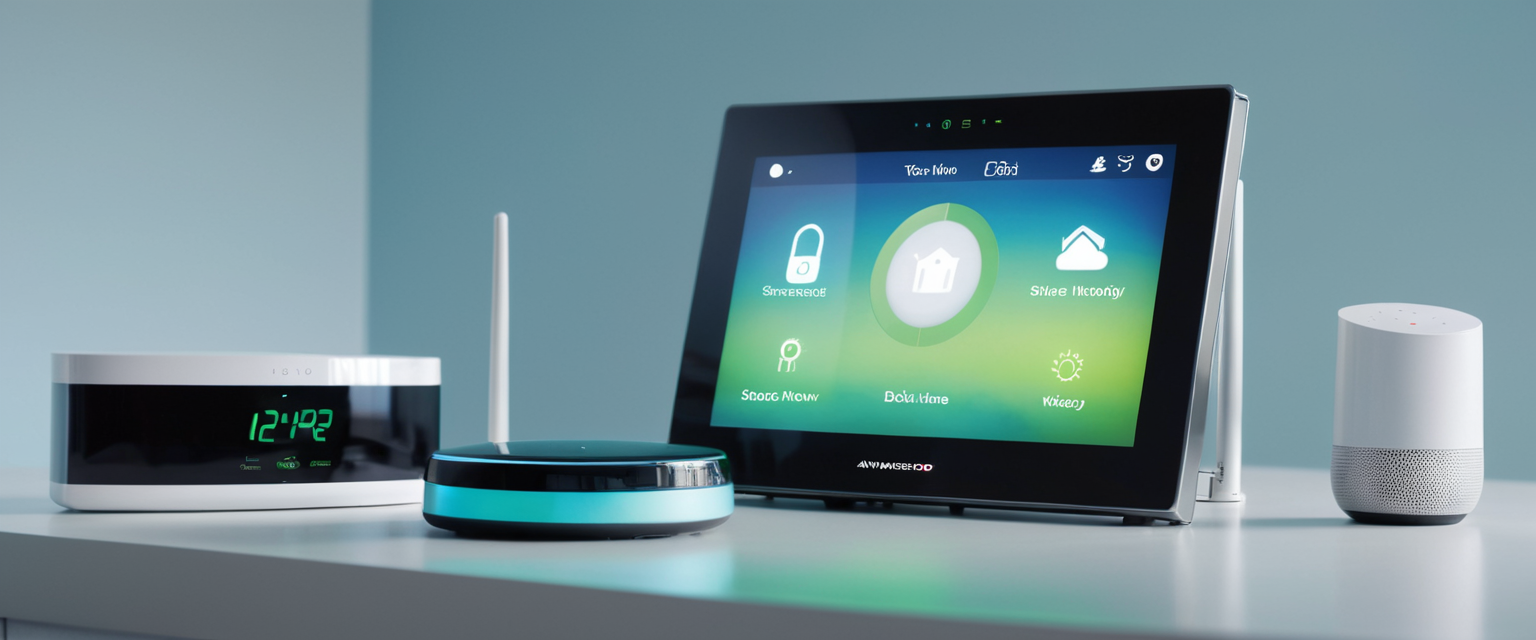
The explosive growth of Internet of Things (IoT) devices has fundamentally transformed the cybersecurity landscape, creating unprecedented challenges in defending connected ecosystems against malware and ransomware attacks. As of 2025, organizations worldwide face an alarming reality where approximately 820,000 hacking attempts target IoT devices daily, representing a 46% increase from the previous year. With an estimated 35.2 billion connected devices globally and projections suggesting this number could exceed 75 billion by 2025, the attack surface available to malicious actors has expanded exponentially. This comprehensive analysis examines the multifaceted approaches necessary to implement effective virus protection and reduce the attack surface of IoT gadgets through a combination of technical controls, architectural strategies, and organizational practices. The convergence of weak device security, insufficient patch management, and the proliferation of accessible entry points has created an environment where even unsophisticated attackers can compromise critical infrastructure, healthcare systems, and consumer devices. By understanding the nature of IoT vulnerabilities and implementing layered defense strategies, organizations can significantly diminish the risk of malware infections, ransomware deployments, and the subsequent operational disruptions that accompany successful attacks.
The Escalating Threat Landscape Targeting IoT Ecosystems
The threat environment surrounding IoT devices has evolved dramatically from relatively simple botnet campaigns into a sophisticated ecosystem of targeted attacks that exploit fundamental security weaknesses. The infamous Mirai botnet, which emerged nearly a decade ago, initially demonstrated how default credentials and unpatched vulnerabilities could transform hundreds of thousands of IoT devices into a coordinated attack platform capable of launching distributed denial-of-service attacks exceeding one terabits per second. However, more recent developments reveal that adversaries have adapted their tactics significantly. In July 2025, Google disclosed BadBox 2.0, the largest known botnet of internet-connected televisions, which compromised over 10 million smart TVs, digital projectors, in-car infotainment systems, and digital picture frames. This malware demonstrated the capacity to distribute through multiple vectors including pre-installation, command-and-control server delivery, and third-party application marketplaces, highlighting how attackers exploit the fragmented nature of IoT device distribution channels.
The scope and scale of malicious activity targeting IoT infrastructure continues to intensify. In the first quarter of 2025 alone, Kaspersky’s security solutions blocked over 629 million attacks originating from online resources, revealing the massive infrastructure dedicated to finding and exploiting vulnerable IoT endpoints. Even consumer-level networks face significant pressure, with the average home network experiencing approximately 10 distinct attack attempts every 24 hours. These numbers represent not targeted, human-driven efforts but rather the output of automated reconnaissance systems that systematically scan the internet for vulnerable devices. Fortinet’s 2025 Global Threat Landscape Report reveals a 16.7% worldwide rise in active scanning as adversaries deploy automated tools to create near real-time maps of the internet’s attack surface. These scans relentlessly probe for open ports, outdated firmware, and default credentials—the fundamental weaknesses that continue to plague IoT device security.
The financial and operational impact of successful attacks on IoT environments extends far beyond data theft. A critical distinction has emerged between traditional information technology breaches and attacks on operational technology and IoT systems controlling physical processes. Manufacturing and transportation sectors have emerged as the top two most targeted industries in 2025, reflecting a strategic choice by attackers to target environments where operational continuity is paramount. When ransomware compromises industrial control systems or healthcare IoT devices, the consequences become kinetic rather than merely informational. A compromised medical device can endanger patient safety, a hacked water treatment plant can threaten public health, and a disabled power grid can cause widespread chaos. This convergence of digital and physical risk means that IoT security is no longer merely an information technology concern but rather a fundamental issue of business resilience and public safety. The economic pressure on victims becomes extraordinary when operational shutdown becomes the alternative to paying ransom demands.
Understanding IoT Attack Surfaces and Vulnerability Ecosystems
An IoT device’s attack surface encompasses all potential points or routes through which attackers can take advantage of security flaws. This attack surface consists of multiple layers including network interfaces, operating systems, firmware, physical ports, authentication techniques, cloud services, APIs, sensors, and physical access pathways. Understanding and effectively reducing this multidimensional attack surface requires recognizing that no single security measure can adequately protect against all threat vectors. The complexity arises from the fundamental architectural differences between IoT devices and traditional computing systems. Many IoT devices operate with severely limited computational resources, constrained memory, restricted power supplies, and minimal processing capabilities, which directly constrains the security mechanisms that can be practically implemented.
The proliferation of IoT devices across organizational networks has created unprecedented management challenges. As of 2022, enterprises had deployed over 100 million IoT devices, a figure that has undoubtedly skyrocketed in the intervening years. Manufacturing environments exemplify this proliferation, with an average of 47 IoT devices deployed per thousand square feet of factory space. However, the fundamental challenge extends beyond mere device proliferation—it encompasses the inability of many organizations to maintain accurate inventories of their connected devices. One study noted that security teams had discovered over 2 million devices but remained certain that additional undiscounted devices remained connected to their networks. This visibility gap represents perhaps the most critical vulnerability in any organizational defense strategy, as the principle of effective security management states that one cannot protect what one does not know exists.
The key vulnerabilities plaguing IoT devices remain remarkably consistent and largely preventable through straightforward security practices. Weak authentication represents the first critical vulnerability, with many IoT devices shipping with default or weak credentials that users fail to change. The persistence of default passwords has become so problematic that the US Cybersecurity and Infrastructure Security Agency (CISA) has specifically urged manufacturers to eliminate default credentials entirely, citing “years of evidence” that these preset passwords remain among the most exploited weaknesses. Iranian hackers breached US water facilities by simply using the manufacturer’s default password “1111” on a pressure station serving 7,000 people, demonstrating the real-world consequence of this fundamental oversight. The lack of regular updates constitutes a second persistent vulnerability, with outdated firmware containing known vulnerabilities that remain unpatched posing serious risks. Manufacturers frequently fail to provide regular updates, or users neglect to apply them when available, leaving devices exposed to attackers possessing zero-day exploit knowledge. Network segmentation failures represent a third category of vulnerability, where poor network design exposes critical systems to unnecessary risks when IoT devices share networks with critical infrastructure. Inadequate firewall protection is another widespread problem, where the absence of properly configured firewalls leads to unauthorized access. Unencrypted data in transit and at rest exposes sensitive information to interception or theft. Overprivileged devices with excessive permissions are more susceptible to exploitation, and if an attacker gains access to such a device with high-level privileges, they can potentially control entire ecosystems. Finally, unnecessary features on IoT devices that serve no functional purpose can act as attack vectors if not properly disabled.
Malware and Ransomware Threats Specifically Targeting IoT Infrastructure
Malware attacking IoT devices differs fundamentally from traditional computer viruses in several critical ways. IoT malware must operate on devices with limited processing power and memory, making these programs inherently more challenging to detect and remove. They can spread rapidly across networks of connected devices, creating large-scale botnets capable of launching devastating distributed denial-of-service attacks. The most common types of IoT malware include Mirai, a notorious botnet that infects IoT devices with weak security credentials; BrickerBot, malware designed to render devices inoperable; Hajime, a sophisticated worm spreading through unsecured IoT devices; and VPNFilter, a multi-stage modular malware platform targeting networking equipment.
Ransomware attacks on IoT devices, while not yet reaching the scale of attacks on traditional endpoints, represent an evolving threat category with unique characteristics. IoT ransomware attacks involve threat actors controlling or locking devices to extort payment from victims. The FLocker ransomware variant, an Android mobile lock-screen ransomware, shifted to target smart TVs, demonstrating how ransomware families can adapt across device categories. Security researchers have tested ransomware attacks on smart thermostats and coffee machines, though such attacks have not progressed significantly in recent years because traditional IoT ransomware has primarily affected NAS devices and routers rather than providing financial incentive for sophisticated attackers targeting more profitable targets. However, the convergence of ransomware with operational technology systems has created far more serious implications. When ransomware targets industrial control systems or critical infrastructure, the stakes escalate dramatically. The infamous Colonial Pipeline ransomware attack in 2021 exemplified how IoT and operational technology infrastructure represent lucrative targets, with attackers demonstrating the capacity to disrupt essential services that affect entire regions.
The consequences of successful malware and ransomware attacks on IoT environments extend far beyond the device level to create cascading organizational impacts. Even after victims pay ransoms, unauthorized users may monitor activities through compromised smart cameras, misuse banking or cryptocurrency wallet credentials, and utilize compromised devices to launch DDoS attacks on other targets. Threat actors can conduct in-depth analysis of custom enterprise software, reverse engineer code, and leverage it for their benefit. The specific cybersecurity risks created by compromised IoT devices include botnet enlistment that converts devices into attack platforms; data theft extracting sensitive information; device hijacking enabling unauthorized control; physical security breaches through compromised smart locks and cameras; spying and eavesdropping via audio and video capture; and unauthorized device operation altering functionality.
IoT botnets present particularly insidious threats because they frequently succeed in recruiting massive numbers of devices that then distribute other malware families, including ransomware. The Mirai botnet’s creation by three young men (Josiah White, Paras Jha, and Dalton Norman) who initially developed it to conduct distributed denial-of-service attacks against rival Minecraft servers and then commercialized their botnet for click fraud and other malicious purposes demonstrates how even low-skill attackers can leverage weak IoT device security to create sophisticated attack infrastructure. The original Mirai variant employed automated scanning to identify devices running on ARC processors with Linux operating systems, then attempted to log in using a database of 61 common username and password combinations. The botnet successfully compromised more than 600,000 connected devices, which were subsequently recruited to launch devastating attacks that temporarily disabled internet services for Twitter and Netflix, causing millions in damages.

Foundational Strategies for Reducing IoT Attack Surfaces
Effective attack surface reduction begins with the implementation of strong authentication mechanisms that exceed the typical weak credentials shipped with IoT devices. Organizations should require strong, unique passwords for each device and actively encourage users to change default credentials during initial setup. Two-factor authentication (2FA) should be implemented wherever technically feasible to request multiple forms of identity verification before granting access. The persistence of default passwords as a primary attack vector has prompted regulatory interventions, with the UK recently moving to ban IoT devices shipping with default credentials. For security-critical applications, the implementation of FIDO2/WebAuthn authentication standards provides passwordless logins using public key cryptography, creating unique, unphishable credentials bound to users’ physical devices. This approach proves immune to credential stuffing, phishing, and password theft—the primary attack vectors enabling many IoT compromises.
Regular firmware updates and patch management constitute a second foundational strategy for reducing attack surfaces. Security patches for known vulnerabilities are frequently included in routine firmware updates, yet many manufacturers fail to provide regular update mechanisms while users neglect to apply available patches when offered. Establishing a rigorous update and patch management process closing security gaps within acceptable timeframes proves crucial for maintaining device security throughout their operational lifespans. The challenge intensifies when considering that firmware updates require more careful approaches than software updates due to their direct impact on hardware functionality. A failed firmware update can render devices inoperable, leading to costly recalls, downtime, and security risks. Organizations must balance the imperative to patch known vulnerabilities against the risks created by update failures, necessitating comprehensive testing protocols before widespread deployment.
Network segmentation emerges as a third critical foundational strategy, with multiple sources identifying isolation of IoT devices through segmentation as a widely accepted best practice to reduce attack surface and contain threats effectively. Segmenting IoT devices onto separate networks from critical systems isolates potential breaches and limits unauthorized access. Network segmentation ensures that even if an attacker gains access to an IoT device, they cannot automatically access sensitive data or systems. By creating separate, isolated networks (VLANs), organizations can contain potential breaches and prevent attackers from “pivoting” laterally into core corporate networks. This is a core tenet of a defense-in-depth strategy where compromised peripheral devices remain isolated from critical infrastructure. For healthcare organizations deploying Internet of Medical Things devices, isolating IoMT devices through segmentation represents a recommended best practice for containing ransomware threats.
Protect Your Digital Life with Activate Security
Get 14 powerful security tools in one comprehensive suite. VPN, antivirus, password manager, dark web monitoring, and more.
Get Protected NowFirewall protection must be deployed with strict rule sets to control inbound and outbound traffic to and from IoT devices. Customizing firewall rules based on specific device requirements enables organizations to serve as barriers between devices and potential threats, filtering out malicious traffic. Security gateways acting as intermediaries between IoT devices and networks possess greater processing power, memory, and capabilities than the IoT devices themselves, allowing implementation of advanced features such as firewalls that prevent hacker access. Harvard Information Security recommends creating firewall rules restricting IoT devices to outbound connections only, allowing access exclusively to required manufacturer sites while blocking unnecessary local network access.
Data encryption must be implemented both in transit and at rest using robust encryption protocols. This safeguards sensitive information from eavesdropping and data theft, ensuring that even if data is intercepted, it cannot be decoded without proper decryption keys. All data sent to AWS IoT Core is transmitted over TLS connections using MQTT, HTTPS, and WebSocket protocols, making encryption secure by default in transit. Multiple encryption methodologies prove suitable for IoT implementations, including Elliptic Curve Cryptography (ECC), which generates short cryptographic keys just as strong as similar alternatives while proving less computationally intensive than alternatives, making it ideal for low-power IoT devices. Twofish encryption provides symmetric encryption suitable for midrange internet-capable technology, though it requires significant storage space. The Module-Lattice-Based Digital Signature Algorithm (ML-DSA), formerly known as CRYSTALS-Dilithium, provides quantum-resistant cryptography endorsed by the UK’s National Cyber Security Centre and the US National Institute of Standards and Technology.
The principle of least privilege must be followed to restrict device permissions to only what is necessary for intended functions. Limiting privileges reduces the attack surface by ensuring that devices have access only to resources required for their operation. This principle extends beyond individual devices to encompassing role-based access control (RBAC) within IoT ecosystems, where various entities are assigned roles based on their functions and responsibilities, with each role granted only the fewest privileges necessary to accomplish its designated tasks. The principle of least privilege strikes a balance between usability and security to safeguard critical data and systems by minimizing the attack surface, limiting cyberattacks, enhancing operational performance, and reducing the impact of human error. Organizations implementing least privilege access can significantly reduce malware propagation by preventing users from installing unauthorized applications and stopping lateral network movement that can launch attacks against connected devices.
Disabling unnecessary features and services represents a final foundational strategy. Many IoT devices ship with plentiful features, some of which may not be required for their intended purpose. These unused functionalities can serve as attack vectors if not properly disabled. Fewer active components translate directly into fewer vulnerabilities, as each enabled service represents a potential attack surface. For example, if a smart camera includes unnecessary network services, they should be disabled to reduce the potential attack surface. Organizations should audit device configurations to identify and disable any non-essential services that could provide pathways for attackers to compromise systems.
Advanced Technical Controls: Secure Boot, Cryptography, and Firmware Management
Secure boot represents a foundational hardware security mechanism that ensures only authenticated and trusted firmware can execute on IoT devices, preventing attackers from injecting malicious code at startup. Specific secure boot implementations follow a series of validation steps designed to ensure installation integrity during device operation and secure execution. These steps typically include verifying that the initial bootloader executable is genuine and unaltered, running the bootloader executable which checks that required subsystems exist and function correctly, initiating basic logging, checking for new firmware updates and verifying their authenticity, verifying that external services operate correctly, and finally verifying that application code is legitimate before execution. The first stage—verifying that the bootloader is genuine and not been tampered with—proves crucial, as only after this verification can the rest of the boot process be assured.
The verification process typically employs public/private key cryptography, where manufacturers store their private keys very securely and never reveal them to external parties. When a device is manufactured, the public key associated with the private key is placed in secure storage on the device. The bootloader code is developed using secure development processes and then a cryptographic hash is digitally signed with the manufacturer’s private key. Whenever bootloader firmware is to be installed, the hash signature is checked against the embedded public key on the device to confirm that it represents a genuine hash value from that manufacturer. The firmware code is then hashed again and compared with the signed hash, and only if this matches (indicating the firmware code has not been altered) will the new firmware be installed. Thereafter, whenever the device boots, the installed bootloader is again verified before being allowed to run.
Cryptographic functions for these purposes and secure storage of keys can be provided by dedicated chips or modules such as Secure Access Modules (SAM) or Trusted Platform Modules (TPM). TPM chips enhance IoT device security by providing hardware-based cryptographic functions and secure storage for sensitive data. Physical Unclonable Functions (PUF) can also be embedded in gateways to securely store private keys of all digital certificates, ensuring keys never leave the gateway. Many modern microcontrollers include hardware support for secure boot, and leveraging these features whenever possible prevents early-stage attacks.
Over-the-air (OTA) firmware updates represent a critical security capability, enabling organizations to resolve vulnerabilities when discovered. The foundation of secure over-the-air updates starts with a hardware-based root of trust that anchors the entire security framework from the moment the system boots. However, building OTA update systems correctly proves challenging, and homegrown solutions frequently introduce serious vulnerabilities. Organizations should consider automating OTA update deployment to ensure no device is left behind on outdated firmware, thereby minimizing security risks. The process should include comprehensive pre-deployment testing using automated hardware-in-the-loop simulations, stress tests, and real-world scenarios to ensure firmware works across various devices and environments before scaling. Secure OTA updates must employ cryptographic signing, encrypted channels like TLS, and anti-rollback mechanisms to ensure only trusted updates are installed.
Firmware signing processes create an additional security layer by verifying the source and integrity of firmware itself. While secure boot ensures only authenticated code runs on devices, signing firmware images adds another verification layer by confirming the source and integrity of the firmware itself. This practice is crucial for preventing unauthorized or malicious updates from being executed, creating trust chains that protect devices from unauthorized code. Ensuring that signing keys are stored securely and rotated regularly maintains the integrity of the signing process. Early IoT security practices frequently failed to implement firmware signing, allowing anyone who discovered device firmware protocols to create valid firmware and forcibly install it on devices, representing a massive security vulnerability.
Device identity and authentication frameworks must ensure every device has a distinct identity with robust authentication procedures preventing unwanted access. Device identity can be established using X.509 digital certificates, enabling external entities to verify device identity and enabling HTTPS or NTLS protocols. This approach enables commands issued to devices or sensors to come from trusted devices with verified identities. Because gateway devices are vulnerable to physical tampering where private keys can be extracted and cloned, extra security measures are necessary, such as embedding Trusted Platform Modules with strong identity that prevents spoofing or man-in-the-middle attacks.
Monitoring, Anomaly Detection, and Real-Time Threat Response
Network monitoring and anomaly detection emerge as essential components of comprehensive IoT protection strategies. Deploying advanced network monitoring tools that detect unusual traffic patterns or behavior from IoT devices proves essential for early threat detection. Machine learning-powered systems help identify potential malware infections before they spread. Anomaly detection in IoT devices involves monitoring data streams from sensors or connected systems to identify patterns deviating from normal behavior. IoT devices generate continuous data such as temperature readings, motion sensor outputs, or network traffic metrics that anomaly detection algorithms analyze in real time or batch processes, flagging unexpected values that could indicate issues like hardware failures, security breaches, or environmental changes.
Common anomaly detection techniques include statistical methods such as z-score analysis or moving averages that establish baselines for normal data ranges and flag outliers. Machine learning models such as unsupervised clustering (k-means) or autoencoders learn patterns from historical data to detect deviations without predefined rules. For instance, an industrial IoT sensor monitoring machinery vibration might use an Isolation Forest algorithm to identify abnormal vibrations signaling potential equipment failure. Threshold monitoring involves setting predefined limits for various metrics, with metrics exceeding these limits flagged as anomalies and creating alerts. This method proves straightforward and easy to implement but may not suit complex or dynamic systems.
Edge computing is often employed to process data locally on IoT devices, reducing latency and bandwidth usage. A security camera with on-device anomaly detection could analyze video feeds to spot unauthorized movement without transmitting all footage to the cloud. For security-focused use cases like detecting network intrusions in smart home devices, behavioral baselines must be periodically retrained to account for legitimate changes in user habits while identifying malicious activity such as unusual data exfiltration attempts. Looking for anomalies in device behavior represents one of the easiest and most overlooked ways to detect security problems—if a temperature sensor suddenly sends a gigabyte of data daily instead of its usual two kilobytes, something is seriously wrong. Organizations should start by tracking signals that are easy wins, such as how often devices reset, ingress and egress network traffic, and which hosts and IP addresses devices communicate with, as these can signal memory corruption issues and potential exploitations.
Endpoint Detection and Response (EDR) technologies provide proactive cybersecurity capabilities that help identify, respond to, and mitigate cyberthreats on devices. EDR is a cybersecurity technology that continuously monitors endpoints for evidence of threats and performs automatic actions to help mitigate them. Endpoints—the many physical devices connected to networks including mobile phones, desktops, laptops, virtual machines, and IoT technology—give malicious actors multiple points of entry for attacks on organizations. EDR solutions help security analysts detect and remediate threats on endpoints before they spread throughout networks. An antivirus program represents a step below EDR, designed to bar malicious actors by checking for known threats and taking automatic quarantine actions. EDR provides additional protection if a breach occurs by enabling detection and remediation. EDR has the ability to hunt for as-yet-unknown threats that evade the perimeter by detecting and analyzing suspicious behaviors, otherwise known as indicators of compromise.
EDR works by continuously monitoring endpoints with software agents installed on each managed device to ensure full visibility into the digital ecosystem. The data ingested from each device is sent back to the EDR solution in cloud or on-premises deployments, making event logs, authentication attempts, application usage, and other information visible to security teams in real time. The EDR solution uncovers indicators of compromise that would otherwise be easy to miss, typically using artificial intelligence and machine learning to apply behavioral analytics based on global threat intelligence. When potential attacks are flagged, EDR solutions send actionable alerts to security teams so they can respond quickly, and depending on the trigger, may automatically isolate endpoints or otherwise contain threats to prevent spreading. EDR technology keeps forensic records of past events to inform future investigations, enabling security analysts to consolidate events or gain comprehensive views of prolonged or previously undetected attacks.

Organizational Frameworks and Lifecycle Management Approaches
Zero-trust architecture represents a fundamental shift in security philosophy that assumes no inherent trust in any system component, requiring continuous verification of device identity, behavior, and communication. Zero-trust security models prove particularly valuable in IoT environments where devices operate across diverse network environments and may be compromised without detection. Within zero-trust frameworks, the principle of least privilege provides abilities to accurately identify applications and specific application functions across any and all ports and protocols. This eliminates the need for administrators to think about network constructs and enables fine-grained access control to implement comprehensive least-privileged access.
Implementing zero-trust for IoT solutions requires several key components. Strong identity authentication for devices proves crucial for establishing trust and ensuring secure communication between devices and networks. By establishing strong identity authentication mechanisms, organizations can verify the validity of devices attempting to connect to networks, implementing strict access controls that grant access only to authenticated devices. The unique identity of each device provides clear trails of actions and transactions, allowing organizations to monitor and audit device activities for swift identification and response to suspicious or malicious behavior. Controlling access to mitigate blast radius represents another critical requirement, preventing unauthorized access to critical systems and minimizing the impact of security breaches. In zero-trust environments where trust is never assumed and access is granted on a need-to-know basis, access controls become crucial for protecting IoT devices and the sensitive data they manage. By implementing access controls limiting access to specific devices or services based on policies and privileges, organizations ensure that the scope of potential breaches is contained, minimizing impact on entire networks.
Continuous authentication goes beyond single-point authentication during device onboarding, requiring ongoing verification of device identity and behavior. This includes cryptographic challenges, behavioral analysis, and anomaly detection that can identify compromised devices in real-time. Micro-segmentation involves network architectures implementing granular segmentation that isolates device groups and individual devices based on function, risk level, and communication requirements. This prevents lateral movement of attackers and contains the impact of security incidents.
IoT device lifecycle management represents a comprehensive approach to managing the entire lifecycle of IoT devices from conception and design through manufacturing, distribution, installation, and eventual decommissioning. Effective IoT device lifecycle management is crucial for ensuring device security and longevity throughout their lifespans. A well-planned IoT device lifecycle management strategy can help organizations keep track of devices, maintain their security, and extend their operational lifespans. The phases of IoT device lifecycle management include planning and design, where organizations identify deployment purposes and design devices to meet specific requirements while addressing scalability and incorporating security by design. Deployment and provisioning involves configuring devices for operational use and ensuring they connect securely to networks. Operations and maintenance covers ongoing device management including firmware updates, security monitoring, and performance optimization. Finally, retirement and decommissioning ensures secure disposal of devices to prevent data exposure and exploitation of obsolete systems.
Implementing successful IoT Device Lifecycle Management strategies requires clear governance frameworks establishing policies and procedures for managing IoT devices throughout their lifecycles, defining roles and responsibilities for teams, setting security standards, and ensuring compliance with regulations. Automation of updates and monitoring is essential, as managing IoT device fleets manually is nearly impossible—automation of firmware updates, security patches, and performance monitoring reduces human error and ensures devices remain up-to-date. Planning for scalability ensures organizational strategies scale effortlessly as IoT networks grow by using centralized management platforms and standardized device configurations. Prioritizing security at every stage is fundamental, requiring security integration throughout device planning, deployment, encrypted data transfer, and rigorous decommissioning. Proactive monitoring and analysis of data generated by devices provides valuable insights for improving lifecycle management processes. Planning for end-of-life from device inception ensures secure decommissioning and recycling, maintaining compliance with environmental regulations and eliminating risks of retired devices being exploited.
Comprehensive Disaster Recovery and Incident Response for IoT Environments
Organizations must develop robust incident response procedures specific to IoT environments, addressing challenges including device isolation, forensic analysis, and business continuity during security incidents. For organizations experiencing ransomware attacks on IoT devices, comprehensive incident response involves several critical steps. First, infected systems must be isolated immediately to prevent ransomware from spreading further, with devices disconnected from networks without deleting files or rebooting machines, as these actions may trigger further encryption or data loss while compromising forensic analysis. Assessment of damage scope follows, with incident response teams notified and forensic evidence preserved. Incident reporting to relevant authorities is essential, with legal and compliance advisors consulted especially if customer or sensitive data is involved. Recovery proceeds using clean backups, with root cause analysis conducted to prevent recurrence.
Organizations should conduct ransomware recovery plan testing at minimum quarterly, though high-risk industries benefit from monthly or bi-monthly drills. Plans should be updated and tested every time major organizational changes occur, whether reorganizations, mergers and acquisitions, or important releases. Disaster recovery solutions for IoT platforms have become essential for companies running high-reliability businesses requiring consistent device connectivity and seamless transfer of connectivity configurations when regional IoT services become unavailable. Comprehensive IoT disaster recovery strategies must include device inventory with passive scanners detecting devices and providing information on hardware, software, operating systems, firmware revisions, device types and functions, applications, and security assessments. Risk analysis and simulation enables organizations to consider hypothetical situations resulting in reduced downtime and improved resilience, with IoT solutions understanding industry-specific risks and threats. Vulnerability identification and prioritization of remediation activities involves identifying exploitable vulnerabilities within environments and providing actionable recommendations including applying security updates or implementing appropriate compensating controls.
Comprehensive Security Awareness Training and Cultural Integration
The human element remains fundamental to IoT security success, necessitating comprehensive security awareness training that extends throughout organizations. Device hygiene represents the cornerstone of IoT security, encompassing practices designed to maintain device health and security throughout their lifecycles. This begins with understanding devices’ default settings, which often favor ease of use over security, requiring users to secure these settings upon installation. Regular firmware updates address manufacturer-released security vulnerabilities, with training emphasizing update importance and proper configuration. Secure configurations involve not only password protection but also user privilege management and disabling unnecessary features presenting security risks.
Network security training must teach users how to safeguard their networks starting with strong Wi-Fi encryption, firewall employment, and secure network equipment. Users should be informed about risks associated with public Wi-Fi networks and provided best practices for safe use, such as using VPNs encrypting data in transit. Data privacy training must focus strongly on helping users understand data their devices collect, its potential uses, and data breach consequences. Training should cover legal aspects of data privacy including compliance with GDPR and CCPA, teaching users to configure devices minimizing data collection or opting out.
Real-world scenarios and hands-on training help organizations prepare for IoT landscape challenges better than theoretical knowledge alone. Simulating IoT-based cyberattacks demonstrates how attackers exploit vulnerabilities in IoT devices, such as simulated phishing attacks showing credential theft ease and DDoS attack demonstrations showing endpoint security importance. Workshops on securing common IoT devices provide practical training for securing smart home devices, protecting wearable technology, and managing enterprise IoT security implementations. By experiencing these simulations, users better understand security lapse consequences and importance of maintaining good security practices.
Minimizing Your Exposure: Final Thoughts on IoT Resilience
The protection of IoT devices from malware and ransomware requires far more than simple point solutions or isolated security measures. The escalating threat landscape characterized by 820,000 daily hacking attempts, sophisticated botnet campaigns, and targeted ransomware deployments demands comprehensive, multi-layered defense strategies addressing technical, organizational, and human dimensions of security. Organizations must begin with fundamental attack surface reduction through strong authentication, regular firmware updates, network segmentation, firewall protection, data encryption, least privilege access, and disabling unnecessary features. These foundational controls establish baseline security postures that prevent the majority of common attacks exploiting well-known vulnerabilities.
Advanced technical controls including secure boot, cryptographic key management, firmware signing, secure over-the-air updates, and anomaly detection provide additional protective layers for more sophisticated threat detection and response. The implementation of zero-trust architectures, endpoint detection and response systems, and comprehensive disaster recovery planning ensures that even if individual devices become compromised, organizational systems remain resilient and capable of rapid recovery. Equally important are the organizational frameworks encompassing device lifecycle management, incident response procedures, and comprehensive security awareness training that embed security considerations throughout device development, deployment, operations, and decommissioning.
The path forward requires commitment to foundational security hygiene executed consistently and rigorously. Organizations must maintain accurate device inventories, promptly apply security updates, enforce strong credential management, implement network segmentation, and continuously monitor device behavior for anomalies indicating potential compromise. Assuming that compromise will occur and preparing accordingly through robust disaster recovery planning and incident response procedures enables rapid containment and recovery. Most critically, organizations must recognize that IoT security represents not merely an information technology concern but a fundamental business resilience and public safety issue requiring executive attention, adequate resource allocation, and organizational commitment to continuous improvement.






